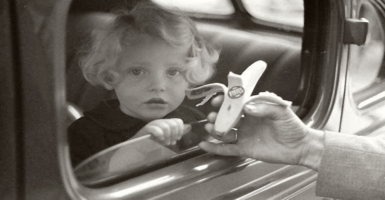
I am currently researching on the history of bananas in Norway. This lead to know a bit more on the history of labels for bananas. In this page ill share a bit of information about, trying to focus just on information related to labels for bananas. However, some historical information will also be shared to give some context. If any of you have some information about, feel free to contact me, to enrich the research. thanks !
Felipe
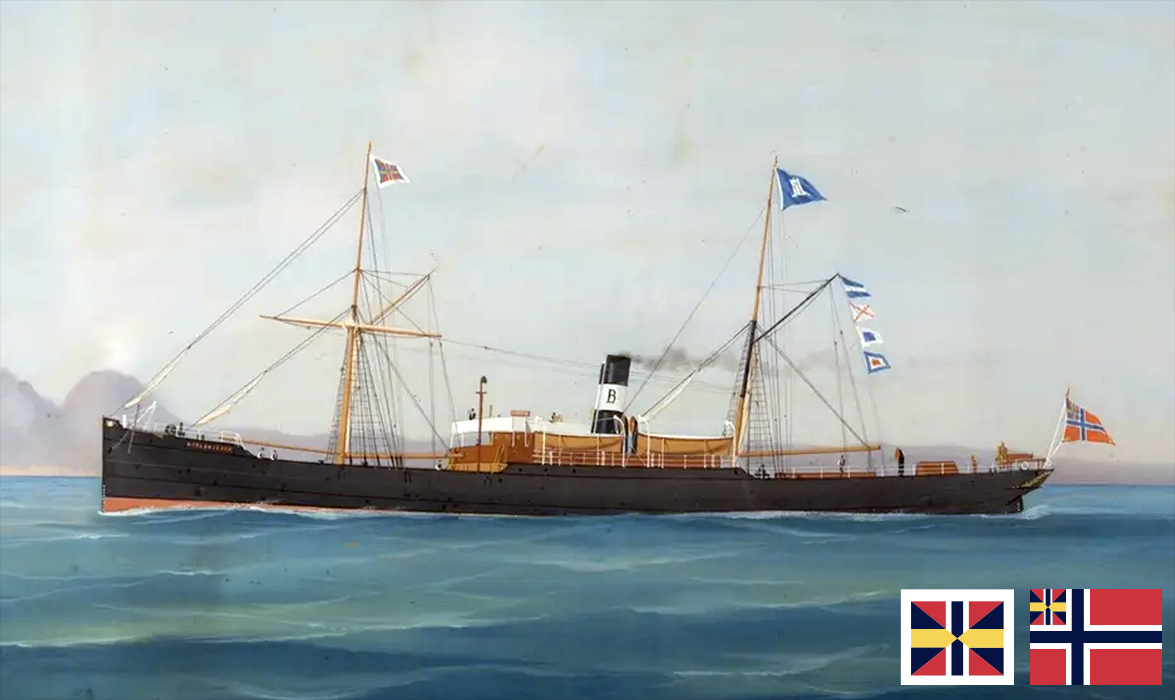
Norwegians played a central role in the early banana trade. By 1871, around 80 per cent of the fleet flew the Norwegian ensign, transporting fruit from the Caribbean to the United States, and later wealthy tourists to the islands aboard steamships known as banana boats. Even the wooden Canary crates used in the early years of banana exports to the United Kingdom were made from Norwegian timber.
Bananas reached Norwegian ports in small quantities during the late nineteenth century, sold as an exotic and costly dessert. Elitist voices defended this exclusivity: “Bananas must now and always be regarded as a luxury item.” (P. A. Morell, Høyre, 1905). Yet the growing popularity of the fruit among the working classes in the United States and the United Kingdom—along with increasing awareness of its nutritional value, taste, and affordability—soon reached Norway, where liberals recognised an opportunity.
In July 1905, the Norwegian Parliament approved a reduced tariff on bananas, noting that they would not threaten local fruits such as apples and pears while offering a healthy option for lower-income families: “folk, som har mindre raad, her faa en sund, god og nærende frugt i sommertiden”(B. Hanssen, Venstre, 1905).
“people with fewer means may here obtain a healthy, good, and nourishing fruit in summertime”
With the stated governmental aim of making bananas the “food of the people” (T. B. Heistein, Venstre, 1905), the first large-scale banana import arrived to Kristiania (now Oslo) in September 1905, coinciding with Norway’s formal withdrawal from the union with Sweden and making Norway the first country in continental Europe to import bananas for a wider market. The three tons shipment was arranged by Christian Matthiessen in partnership with his former crate-timber clients—by then operating as Elders & Fyffes Ltd.—who held exclusive import rights for Europe, securing Matthiessen sole access to the Norwegian and Scandinavian markets.
In the media, the introduction of bananas into Norwegian everyday life was promptly highlighted as a sign of support for Parliament and for the independent nation: “Jeg besluttede mig til at stotte Stortinget. I mit Hjem skulde Bananen bli et Folkenæringsmiddel” (Bergens Annonce Tidende, 23 September 1905 ).
“I decided to support the Norwegian Parliament. In my home, the banana should become a national daily food staple”
Despite high resale prices imposed by conservative merchants, challenges in ripening, and public unfamiliarity, nothing hindered the fruit’s integration into Norwegian culture. By the end of 1905, fifty-seven tons had arrived, and the “delicacy and nourishing food for the common man” (Morgenbladet, 1905) was even used for Christmas decorations.
Bananas soon became an inadvertent symbol of national living standards. Even traditionalists and temperance advocates endorsed their consumption as a means of reducing the intake of alcohol, sweets, and coffee.
“Bananen, denne nærende og velsmagende Frugt, holder nu paa at bli den Folkespise, den fortjener at være ogsaa her hjemme.”(Lister og Mandals Amtstidende og Adresseavis, 1911)
The banana, this nourishing and flavoursome fruit, is now becoming the people’s food it deserves to be here in Norway.
RAW INFO / IMAGES
I attach here a few images that may be of your interest … they are in disorder, and I can share sources if needed.
- A 1924 promotional activity without the label, but with the text on the banana, and a newspaper advertisement of that promo.
- One of the first advertisements of the first banana label FYFFES from 1929.
Banana labels from 1929 were not placed atop of every banana, but alternated in the hand of bananas: one with label, one without, and so on. - a promotional activity in public space by then featuring the new FYFFES labels .
- a banana facility opened in 1930 with the tag of fyffes in a big flag.
- once fyffes bananas appeared in the market, the term JACKO was applied to Jamaica Bananas by distributors, this lead to the quality mark that I share here in an image JACKO EKTE JAMAICA (Jacko is a term for a pet monkey, used in norway too in cartoons, etc… ekte Jamaica means pure Jamaica) (I suppose it was added to the bananas with a label) this image is from a newspaper from 1931 stating that it was the quality brand for bananas from jamaica.
- an adversiment from 1967 when Fyffes changed to Chiquita in Norway , and a promotional car about the change, but still with FYFFES label on it .
- Then in 1937 the name Jacko was registered as a trade mark by Oslo Banankompani A/S.
- In Norway there was also the label MATTIS in late 50s, which I am researching about, with same design as FYFFES. (Sculpture with Mattis label from 1960s. In Bergen facilities, box from Oslo facilities 01.06.1956) . Similar banana boxes from 1953 (in Trondheim) show the label Fyffes. No idea.
- image: roll of FYFFES labels (ca 1964 Trondheim: https://ntnu.tind.io/record/331265?ln=no&v=uv#?xywh=-4850%2C-1513%2C1510...
- Image of one of the first advertisements for Onkel Tuca in Norway with an image, showing a label with the Uncle profile flipped (mirrored) compared to all the logos I’ve seen from around that time. By the way, the name seems like a reference to “Uncle Sam,” especially since bananas—when the brand started—were being imported from Latin America rather than Africa.
- Image also show a plastic bag with same label in colour.
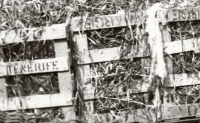
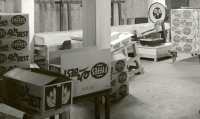
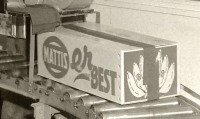
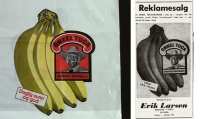
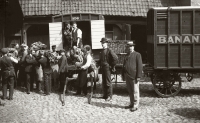
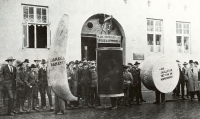
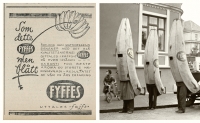
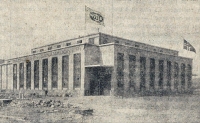
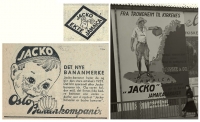
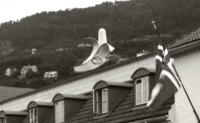
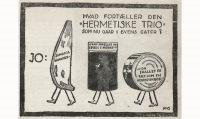
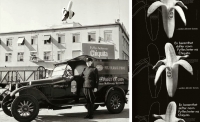
Comments
Great article.
Great article. Congratulations, Piero.